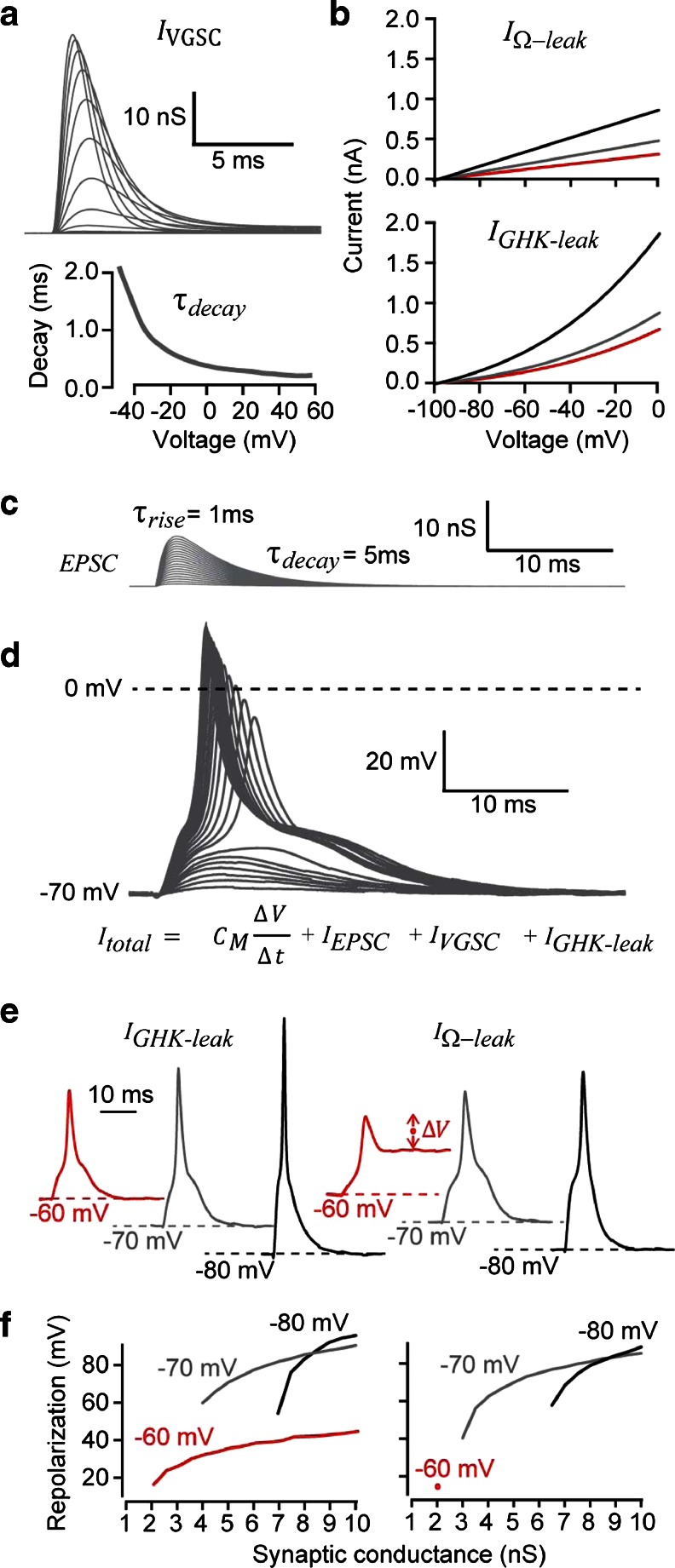Fig. 1.
Simulations to compare the influence of linear versus non-linear leak conductance relationships on AP repolarisation. a Properties of the voltage-gated sodium current (I VGSC) used for simulation studies and dynamic-clamp experiments. The voltage and time-dependent conductance changes are plotted for simulations involving voltage steps from −40 to 0 mV in 5-mV increments. The voltage-dependence of τ decay for I VGSC is also plotted. b The current–voltage relationships generated by the linear (IΩ-leak) and the non-linear potassium leak conductance (I GHK-leak) that generated RMPs of −60 mV (red line), −70 mV (grey line) and −80 mV (black line) are shown. The value of the linear leak conductance was 3.2 nS for −60 mV, 4.9 nS for −70 mV and 8.8 nS for −80 mV. The values of the GHK leak conductance at the minimum membrane potential (i.e. close to the RMP) was 0.65 nS at −60 mV, 0.85 nS at −70 mV and 1.8 nS at −80 mV c Superimposed synaptic currents (I EPSC) that were generated by double exponential functions with peak conductance values ranging from 0.5 to 10 nS. d The membrane voltage that resulted from summation of the currents generated by the conductance changes shown in a, b and c as well as the capacitive current generated by the voltage change. The superimposed voltage records were generated using the I GHK-leak that resulted in an RMP of −70 mV. e Representative examples of voltage simulations comparing the linear (IΩ-leak) and the non-linear (I GHK-leak) leak conductance. APs are generated at all values of I GHK-leak that fully repolarise back to the RMP. However, the lowest conductance value of IΩ-leak that resulted in an RMP of −60 mV was insufficient to fully repolarise the RMP following stimulation by a 2-nS EPSC as shown by the trace indicated with a red circle. F, Plots of AP repolarisation for all simulations indicating the linear (IΩ-leak) and non-linear (I GHK-leak) leak that was capable of repolarisation the AP. The only condition where this was not possible was at an IΩ-leak resulting in an RMP of −60 mV. In this scenario, AP repolarisation was incomplete after the first EPSC of 2 nS, and no subsequent APs could be generated. This was in stark contrast to the I GHK-leak that resulted in an RMP of −60 mV that was always sufficient to repolarise the AP

